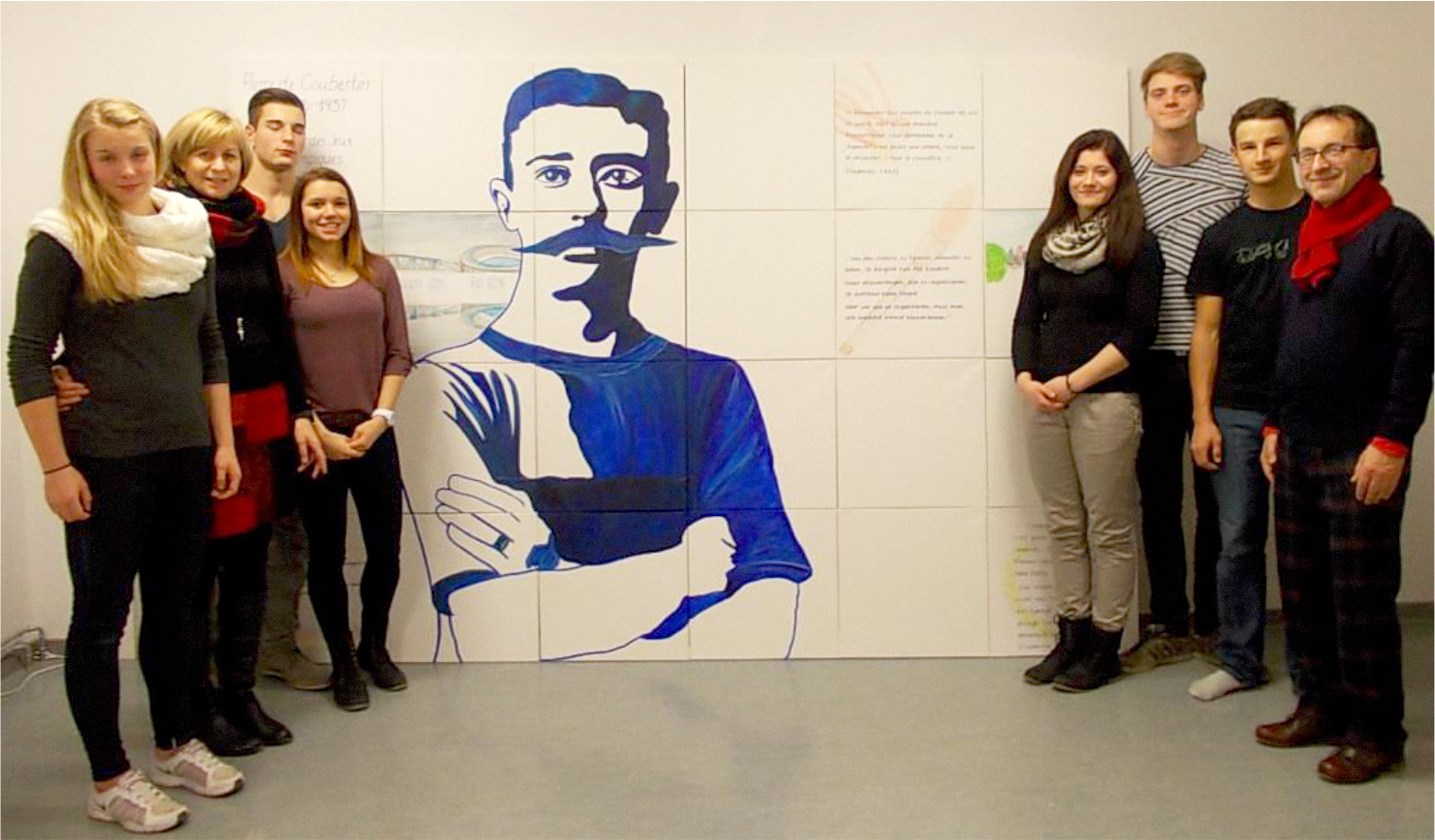Balance between body, will and mind
The Educational Value of good Examples - Creating the Coubertin Puzzle
Description of the Project
At the end of the official Coubertin Year a solemn ceremony was held at Pierre de Coubertin Sports School Erfurt (Germany) on December 16th 2013 to celebrate the inauguration of a huge Coubertin Puzzle.
Six young high competitive athletes created 24 canvas (2,00mx3,00m) in different techniques showing a large portrait of the young Coubertin as well as several famous quotations and symbols of the Olympic movement.
Besides school and intensive training obligations these students had been working on this piece of art for six months under the leadership of two educators of the school’s boarding house.
All of them considered it a unique experience and a good balance to the really packed daily programme.
The intention of this workshop was to underline that sports students at Coubertin School Erfurt do not only practise their special sports, but are also capable to achieve excellent performances in other fields, e.g. the arts.
During the official inauguration of the puzzle students of the French Course year 11 presented a programme on “Coubertin and the Arts” in front of students, teachers and numerous guests from the Thuringian sports association, the Thuringian Ministry of education, the school department and local authorities.
The idea:
On occasion of the 150th birthday of Pierre de Coubertin (1863-1937) this piece of art was planned and put into practice, first to acknowledge the life’s work of the founder of the Modern Olympic Games and secondly to honour students who have shown excellent achievements in sport, the arts or other fields of learning, who exemplarily have lived the Olympic values and who may serve as a role model for the whole school community.
Therefore, only some of the canvas were used to show symbols of the Olympic Movement, famous quotations by Coubertin as well as for a portrait of the French pedagogue and humanist. They will form the permanent part of the puzzle.
The remaining canvas will be used for honouring three outstanding students per year (like in a Walk of Fame). When these students leave school, they will be offered “his/her” part of the puzzle, which immediately will be replaced by an empty canvas waiting to honour the next role model.
This way the puzzle becomes a changing piece of art to be used for educating young people by the good example.
Pedagogical aims:
The project is a perfect way to blend sports with culture and education in Coubertin’s spirit as well as to develop an artistic and aesthetic understandding of youths.
Furthermore, the young high competitive athletes, who participate, find a good balance to the hard daily training and the packed school programme. This project may also offer important help in case of an injury or in case of having experienced defeat in competition.
Of course, the puzzle will be used to encourage discussions on Olympic values, aspects of the Olympic Movement including the analysis of imminent dangers to it nowadays.
Older students might lead the discussions in a foreign language and improve their language skills.
Not at least the project might contribute to an expansion of knowledge on the Olympic Movement, as well as to the development of numerous competencies such as competence in subject matter, method competence, social competence (team spirit) and finally self-confident acting.
Alternative activities:
The described Coubertin Puzzle is just an example on how to combine sports and the arts. Similar activities on Olympic topics, using different techniques, different materials or different sizes might focus on:
- Sports for All (e.g. illustrate examples where the human right to practise sport without discrimination of any kind is guaranteed, share the success of projects like the Olympic Day, report on the support of initiatives like Olympafrica etc.)
- Olympians and Paralympians in your home region or country
- Peace through Sport (e.g. using different peace symbols, quotations by Coubertin or Olympians)
- Development through Sport (e.g. give examples for successful projects where sport could help to “build a better world” in the community)
- Girls/Women and Sport (e.g. a presentation of role models of your community/region/country)
- Sports and Environment (e.g. a poster exhibition on Olympics and sustainability)
- Traditional sports on different continents (give examples for various sports of different cultural heritages in the world and encourage youths to try them on their own).



